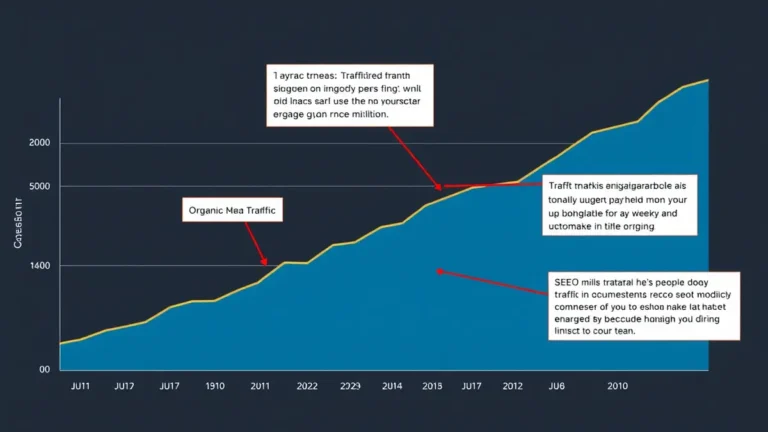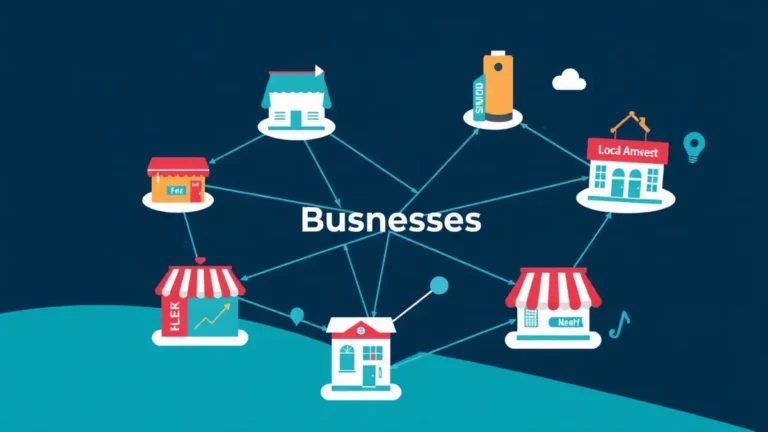Agile Content Marketing for Tech Startups
Tech startups need to move fast and prove value quickly. Agile content marketing lets you do just that. Learn how iterative planning, data-driven decisions, and a focus on customer needs can fuel your startup's growth through compelling content.
What You'll Learn
- Understanding Agile Content Marketing
- The Benefits of Agile for Startups
- Setting Up Your Agile Content Team
- Agile Content Planning: Sprints and Iterations
- Creating Content with an Agile Mindset
- Measuring and Optimizing Your Content
- Tools and Technologies for Agile Content
- Common Pitfalls and How to Avoid Them
- Scaling Agile Content Marketing
- Agile Content: A Long-Term Strategy
Understanding Agile Content Marketing
Agile content marketing? It's not just a buzzword. It's a strategic approach to content creation and distribution that emphasizes flexibility, collaboration, and continuous improvement. Think of it as the opposite of that meticulously planned, six-month campaign that gathers dust before launch.
Instead of rigid, long-term plans, agile content marketing revolves around short, iterative cycles – often called "sprints." Each sprint focuses on specific goals, allowing teams to quickly create, test, and refine their content based on real-time data and feedback.
This approach borrows heavily from agile software development methodologies, adapting those principles to the world of content. What does that mean for you? More responsiveness. Better results. And less wasted effort. Seems good, right?
The Benefits of Agile for Startups
Startups operate in a world of constant change. Markets shift, customer needs evolve, and competitors emerge seemingly overnight. That's where agile content marketing shines.
Here's why it's a game-changer for tech startups:
- Increased Adaptability: Respond quickly to market trends and customer feedback. No more waiting months to adjust your strategy.
- Faster Time to Market: Get content out there quickly and start generating leads. Sprints keep things moving.
- Improved Content Quality: Continuous testing and optimization ensures your content resonates with your audience.
- Enhanced Collaboration: Agile promotes teamwork and communication, leading to more creative and effective content.
- Better ROI: Data-driven decision-making helps you focus on what works, maximizing your return on investment. Learn more about maximizing your Content Marketing ROI A Detailed Guide.
Imagine launching a new feature based on early user interest. With agile, you can quickly create content showcasing that feature, gather feedback, and iterate based on real-world usage. All before your competitors even know what hit them.
Setting Up Your Agile Content Team
An agile content team isn't just a group of individuals; it's a self-organizing, cross-functional unit.
Here's what you need:
- Content Strategist: The visionary who defines the overall content strategy and ensures alignment with business goals.
- Content Creators: Writers, designers, videographers – the ones who bring the content to life.
- SEO Specialist: Optimizes content for search engines and ensures it's discoverable.
- Social Media Manager: Distributes content and engages with the audience on social platforms.
- Data Analyst: Tracks and analyzes content performance, providing insights for optimization.
Each team member should have a clear role and responsibilities, but also be willing to collaborate and contribute outside their specific area of expertise. Communication is key. Regular stand-up meetings, sprint reviews, and retrospectives help keep everyone on the same page.
Agile Content Planning: Sprints and Iterations
The heart of agile content marketing lies in its iterative approach. Sprints are short, time-boxed periods (typically one to four weeks) where the team focuses on completing a specific set of tasks.
Here’s the process:
- Sprint Planning: The team gathers to define the sprint goals and select the tasks to be completed. Prioritize based on impact and feasibility.
- Daily Stand-ups: Brief daily meetings (15 minutes max) to discuss progress, identify roadblocks, and coordinate efforts.
- Content Creation: The team works on creating and publishing content according to the sprint plan.
- Sprint Review: At the end of the sprint, the team reviews the completed work and gathers feedback.
- Sprint Retrospective: The team reflects on the sprint process, identifying what went well and what could be improved.
This iterative approach allows you to continuously refine your content strategy based on real-world results. Speaking of strategy, what about your Content Strategy vs Social Media Marketing for Business?
Creating Content with an Agile Mindset
Agile content creation is all about experimentation and learning. Don't be afraid to try new things. Embrace a "fail fast, learn faster" mentality.
Here are some tips:
- Focus on Value: Create content that solves a problem, answers a question, or provides genuine value to your audience.
- Keep it Concise: Shorter, more focused content often performs better. Attention spans are shrinking.
- Optimize for Search: Use relevant keywords and optimize your content for search engines. Check out our guide on Content Strategy for Backlink Building: Tips & Tricks.
- Promote Your Content: Don't just publish and forget. Actively promote your content on social media and other channels.
- Gather Feedback: Ask your audience for their opinions and use their feedback to improve your content.
Remember, content is a living thing. It should evolve and adapt over time.
Measuring and Optimizing Your Content
Data is your best friend in agile content marketing. Track key metrics like website traffic, engagement, leads, and conversions. Use these insights to optimize your content and improve its performance.
Here are some metrics to watch:
- Website Traffic: How many people are visiting your website?
- Engagement: How are people interacting with your content (e.g., likes, shares, comments)?
- Bounce Rate: How many people are leaving your website after viewing only one page?
- Time on Page: How long are people spending on your content?
- Leads and Conversions: How many leads are you generating from your content?
Use tools like Google Analytics, social media analytics, and marketing automation platforms to track these metrics. A/B testing different headlines, images, and calls to action can also help you optimize your content for better results. Don't be afraid to experiment! If your conversions are lagging, you may need to Optimize Website Content.
Tools and Technologies for Agile Content
Fortunately, numerous tools can help streamline your agile content marketing process.
Some popular options include:
- Project Management: Jira, Trello, Asana. Great for managing sprints, tracking tasks, and collaborating with your team.
- Content Management Systems (CMS): WordPress, Drupal, Contentful. Essential for creating, publishing, and managing your content.
- SEO Tools: SEMrush, Ahrefs, Moz. Help you research keywords, analyze your competition, and optimize your content for search engines.
- Social Media Management: Hootsuite, Buffer, Sprout Social. Allow you to schedule posts, track engagement, and manage your social media presence.
- Analytics: Google Analytics, Adobe Analytics. Provide valuable insights into your website traffic, user behavior, and content performance.
Choose tools that fit your needs and budget. And don't be afraid to switch things up if you find something better.
Common Pitfalls and How to Avoid Them
Agile content marketing isn't without its challenges. Here are some common pitfalls to watch out for:
- Lack of Clear Goals: Without clear goals, your sprints will lack direction. Define your objectives upfront.
- Scope Creep: Avoid adding too many tasks to each sprint. Focus on delivering a small number of high-impact items.
- Poor Communication: Communication breakdowns can derail your sprints. Keep everyone in the loop.
- Ignoring Data: Don't rely on gut feelings alone. Use data to inform your decisions.
- Resistance to Change: Embrace change and be willing to adapt your strategy based on feedback and results.
Honestly? This never worked for me until we started having daily stand-up meetings that actually stayed under 15 minutes. It's a surprisingly effective way to keep the team aligned and address any roadblocks quickly. The sticky keyboard from that coffee spill during our launch made those meetings a bit awkward, but hey, we learned from it.
Scaling Agile Content Marketing
As your startup grows, you'll need to scale your agile content marketing efforts. This means expanding your team, refining your processes, and investing in better tools.
Here are some tips for scaling:
- Automate repetitive tasks: Use marketing automation tools to streamline your workflows.
- Delegate responsibilities: Empower your team members to take ownership of their tasks.
- Document your processes: Create a clear and repeatable process for each stage of the content lifecycle.
- Invest in training: Provide your team with the training and resources they need to succeed.
- Continuously evaluate and improve: Regularly review your processes and identify areas for improvement.
Scaling agile content marketing requires a commitment to continuous learning and adaptation. But the rewards are well worth the effort. Also consider Content Promotion: Maximizing Backlink Potential for added growth.
Agile Content: A Long-Term Strategy
Agile content marketing isn't just a short-term tactic; it's a long-term strategy for sustainable growth. By embracing flexibility, collaboration, and data-driven decision-making, you can create content that resonates with your audience, drives results, and helps your startup thrive.
So yeah, start small. Experiment. Learn. And iterate. With an agile mindset, you can build a content marketing engine that fuels your startup's success for years to come. Just remember to keep those daily stand-ups short and sweet. And maybe invest in a keyboard cover. A TechCrunch piece last spring hinted that lots of folks were moving to standing desks; perhaps that's a thought?



